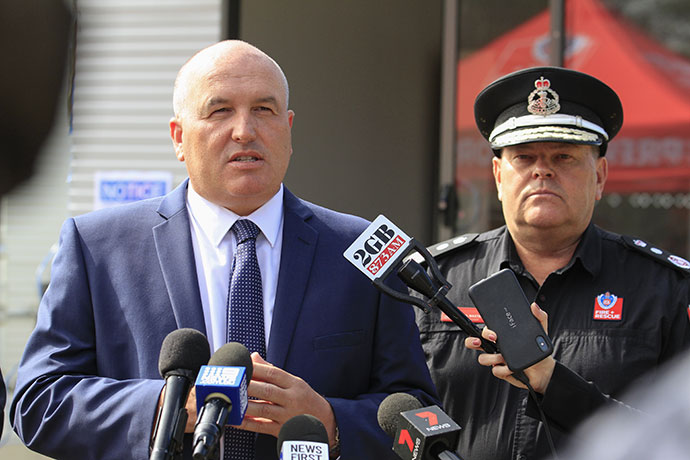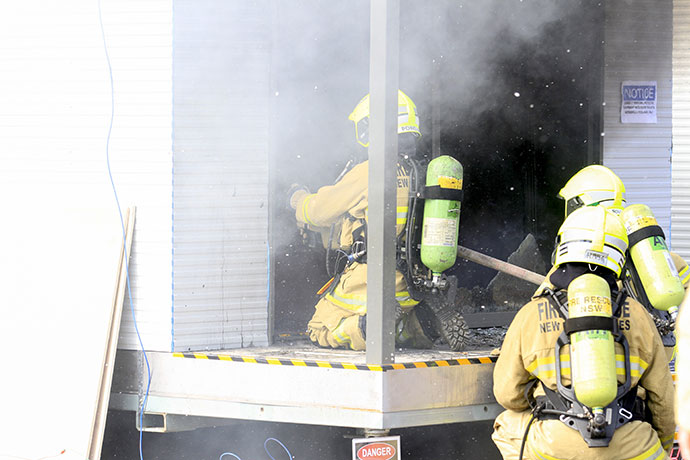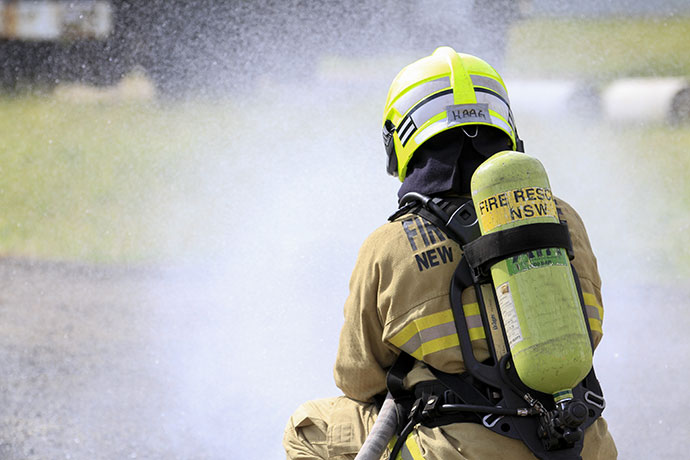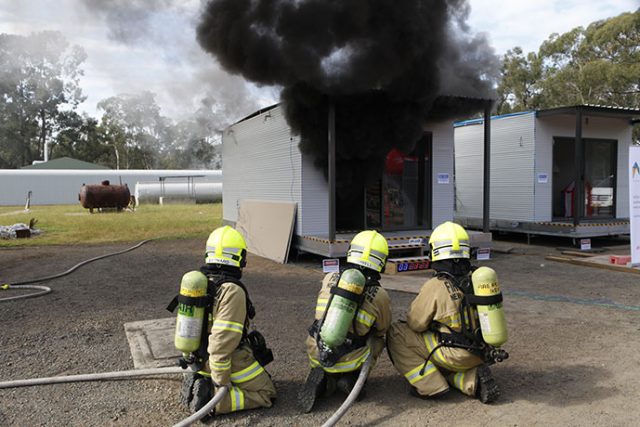New fire safety laws will force apartment buildings to install automatic sprinkler systems in an effort to avoid potential tragedy.
The laws, which come into force on Wednesday, make it mandatory for the installation of automatic sprinkler systems in all new shared residential buildings above three levels and below 25 metres in height.
The importance of this change was demonstrated in a live fire demonstration at the Fire and Rescue NSW (FRNSW) Fire Research Facility in Londonderry earlier this week, where two mock furnished rooms were set on fire to show the difference sprinklers make.
NSW Minister for Emergency Services David Elliott observed the specially designed buildings, demonstrating how a building can be fully engulfed in fire in a few short minutes compared to an identical room fitted with sprinklers.
“Sprinkler systems have been used to protect lives and property in high-rise residential, industrial and commercial buildings for a very long time,” Mr Elliott said.

“Our focus remains on prevention; however, in the event of a fire, residential sprinklers help control it and provide improved protection against fatalities, injuries and damage. They can often mean the difference between a minor incident and a major tragedy.”
These changes result from the recommendations of former Deputy State Coroner Hugh Dillon after a 2012 fire in Bankstown, where 21-year-old Connie Zhang died jumping from an apartment block that was not required to have sprinklers installed.
FRNSW Commissioner Paul Baxter said that research has shown stronger measures are needed to ensure the best fire safety practice in shared residential buildings.

“We had to develop a low cost, fit for purpose solution for these classes of residential buildings in the future,” he said.
“Residential sprinkler systems can contain at least 90 per cent of fires to the room of origin, preventing it from spreading to other rooms and potentially extinguishing the fire and inhibiting the spread of lethal smoke.”
While existing buildings do not need to install sprinklers, it is understood to be reasonably affordable to do so.

Emily Feszczuk
A graduate of Western Sydney University, Emily covers Local, State and Federal politics for the Weekender, as well as crime and general news.

